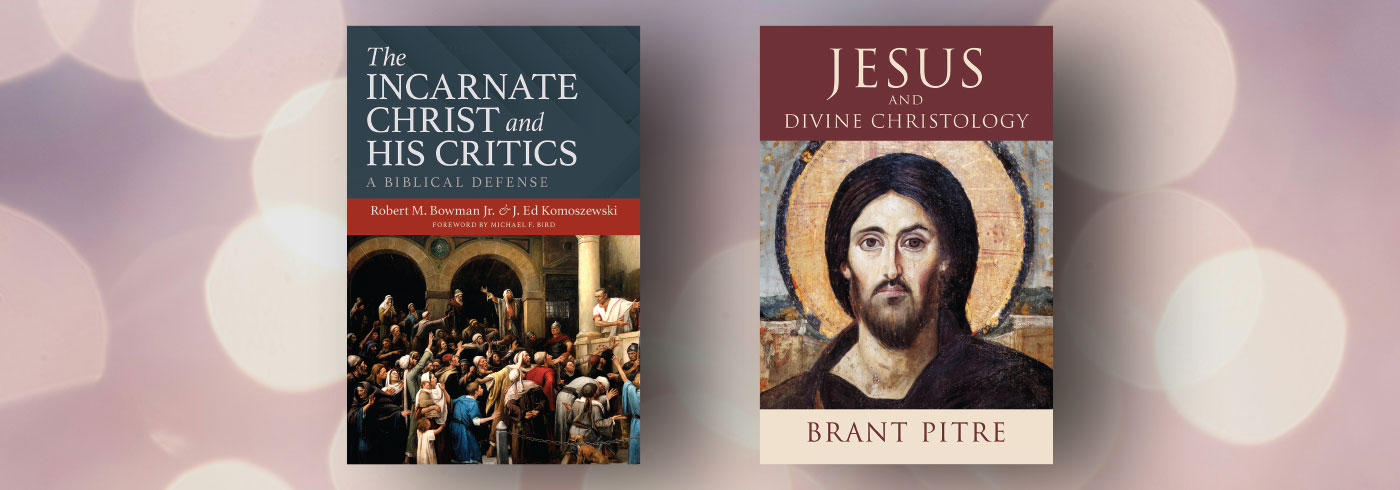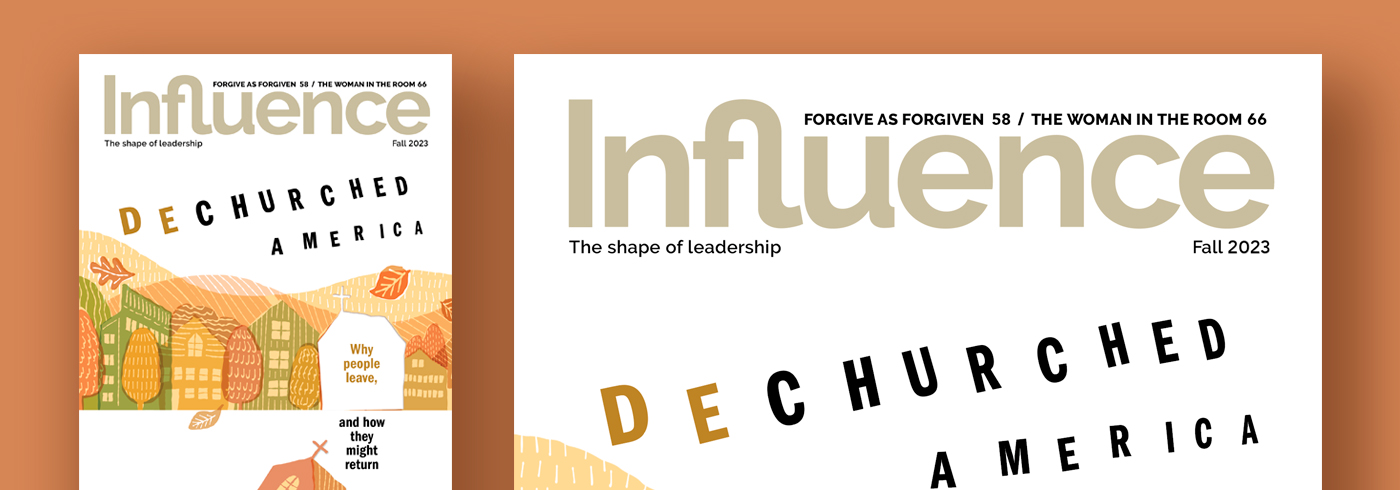Two Cases for Christ’s Divinity
Review of ‘The Incarnate Christ and His Critics’ and ‘Jesus and Divine Christology’
In 2022, Ligonier Ministries and LifeWay Research released The State of Theology, a survey of American religious and moral beliefs. Participants responded to 35 statements on a scale from “strongly disagree” to “strongly agree.” Evangelical responses to three statements in particular revealed a flawed understanding of trinitarian doctrine.
Eighty percent strongly agreed with the orthodox doctrine, “There is one true God in three persons: God the Father, God the Son, and God the Holy Spirit.”
However, 48% expressed strong agreement with a statement saying, “Jesus is the first and greatest being created by God,” a summary of the anti-trinitarian heresy of Arianism.
Twenty-nine percent strongly agreed with a denial of the Trinity associated with liberal Protestantism: “Jesus was a great teacher, but he was not God.”
These contradictory responses suggest an urgent need for better theological education. Two recent books may help pastors and Christian educators in this endeavor.
Exegetical Case
The first book is The Incarnate Christ and His Critics by Robert M. Bowman Jr. and J. Ed Komoszewski. Using the acronym HANDS, the authors adduce five lines of evidence from the New Testament to demonstrate the deity of Christ.
First, Jesus received honors due God alone, including liturgical actions such as worship, blessings, doxologies, songs, sacred rites, and prayer, as well as such devotional attitudes as fear, faith, hope, and love.
Second, New Testament writers described Jesus using attributes appropriate only to God, such as preexistence, eternity, uncreatedness, moral perfection, omniscience, omnipotence, and omnipresence.
Third, the New Testament used divine names and titles for Jesus, including Son of God, God, Savior, Lord, and I Am.
Fourth, Jesus performed deeds only God can do. Examples include speaking with divine authority, forgiving and saving people from their sins, performing miracles requiring inherent divine power, making and sustaining the universe, and rendering final judgment.
Finally, Jesus took His seat at the right hand of God, pouring out His Spirit and ruling over all things from that position.
Bowman and Komoszewski trace these five lines of evidence across hundreds of passages in every book and literary genre of the New Testament. Some passages contain a single line of evidence, while many include several. A handful contain all five.
Of the latter passages, Matthew 28:16–20 offers a useful illustration.
When the disciples met the resurrected Christ in Galilee, they “worshiped” him (verse 17), an example of receiving divine honors.
Christ responded by saying, “All authority in heaven and on earth has been given to me” (verse 18), alluding to Daniel 7:14. This illustrates Christ taking His seat at God’s right hand.
In verse 19, Jesus instructed the disciples to baptize converts in “the name [singular] of the Father and of the Son and of the Holy Spirit,” indicating His name is divine.
Jesus further instructed His disciples to teach converts “to obey everything I have commanded you” (verse 20). Speaking with divine authority is an example of divine deeds.
The doctrine of Christ’s deity (and hence, the doctrine of the Trinity) is firmly rooted in the first-century teaching of Christ and apostolic Christianity.
Finally, when Jesus said, “I am with you always, to the very end of the age,” He hinted at omnipresence, a divine attribute.
Bowman and Komoszewski introduced the HANDS acronym to a popular audience in their 2007 book, Putting Jesus in His Place. The Incarnate Christ and His Critics elaborates the argument with academic depth and rigor.
Moreover, the book engages alternative interpretations of the New Testament from skeptics, Muslims, progressive Christians, Unitarians, Jehovah’s Witnesses, Mormons, and Oneness Pentecostals. Trinitarian Pentecostals especially will be interested in the authors’ engagement with the last group.
Pastors and Christian educators should consider using the HANDS acronym in their preaching and teaching. They might utilize Putting Jesus in His Place with church members as a text for small groups.
They should read The Incarnate Christ and His Critics themselves, however. The book will help them respond intelligently to questions about the meaning of specific passages, as well as critiques of biblical orthodoxy.
Historical Case
Jesus and Divine Christology by Brant Pitre is the second book pastors and Christian educators should read.
Pitre opens his book with a paradox: On the one hand, many New Testament scholars do not think Jesus taught He was divine. “Jesus did not declare himself to be God,” writes Bart Ehrman, for example.
On the other hand, many New Testament scholars also think the earliest Christians believed in Christ’s deity. To quote Ehrman again, “The idea that Jesus is God … was the view of the very earliest Christians soon after Jesus’ death.”
This paradox raises an obvious historical question: Why did the Early Church believe in Christ’s deity if He did not?
Pitre resolves this paradox by arguing that Jesus did in fact teach His deity, albeit indirectly: “The historical Jesus claimed to be divine, but he did so in a very Jewish way — using riddles, questions, and allusions to Jewish Scripture to both reveal and conceal the apocalyptic secret of his divinity.”
To make his case, Pitre turns to 12 incidents in the Gospels — 10 in the Synoptics, two in John — in which “Jesus speaks or acts as if he is divine.”
He groups them under four headings: “epiphany miracles” (e.g., walking on water); “riddles of Jesus’ divinity” (e.g., Jesus’ use of Psalm 110:1); “the apocalyptic secret” (e.g., healing and forgiving the paralyzed man); and “crucified for blasphemy” (e.g., Jesus’ interrogation by Caiaphas).
Ordinary Christians have long cited passages such as these as proof texts of Christ’s deity. Some scholars, however, argue that such passages tell us more about the “Christ of faith” than the “Jesus of history.” That led them into the paradox with which Pitre opens his book.
The great merit of Pitre’s argument is to show that the ordinary Christian reading of those proof texts is historically plausible. He does this by refining a “triple-context” methodology for determining historicity first articulated by E.P. Sanders.
According to that methodology, if an incident in the Gospels is (1) contextually plausible within first-century Judaism, (2) coheres with other evidence about Jesus, and (3) explains the consequential actions and beliefs of the Early Church, then it likely reflects the historical Jesus.
Pitre applies this methodology to all 12 incidents, concluding that they are more historically plausible than not. The earliest Christians taught Christ’s deity because He taught it.
On to Nicea
Both The Incarnate Christ and His Critics and Jesus and Divine Christology discuss the Nicene Creed in their concluding chapters.
That creed — first drafted at Nicea in A.D. 325 and revised at Constantinople in 381 — bequeathed to Christians the technical vocabulary for understanding the relationship between God the Father, God the Son, and God the Holy Spirit.
The members of the Trinity are “consubstantial” or “of the same being” (Greek, homooúsian) with regard to their deity. However, they are personally distinct. The Son is “eternally begotten of the Father,” but the Spirit “proceeds” from the Father — and the Son, according to Western Christianity.
While the technical vocabulary of the Trinity is fourth-century language, the doctrine of Christ’s deity (and hence, the doctrine of the Trinity) is firmly rooted in the first-century teaching of Christ and apostolic Christianity.
We have Bowman, Komoszewski, and Pitre to thank for providing academically rigorous reminders of that fact in their respective books. Our ministry as pastors and Christian educators is to make sure the current generation knows and lives this truth.
Like the earliest Christians, “we wait for the blessed hope — the appearing of the glory of our great God and Savior, Jesus Christ, who gave himself for us to redeem us from all wickedness and to purify for himself a people that are his very own, eager to do what is good” (Titus 2:13–14, emphasis added).
Books Reviewed
Robert M. Bowman Jr. and J. Ed Komoszewski, The Incarnate Christ and His Critics: A Biblical Defense (Grand Rapids, MI: Kregel Academic, 2024).
Brant Pitre, Jesus and Divine Christology (Grand Rapids, MI: Eerdmans, 2024).
This article appears in the Spring 2025 issue of Influence magazine.
Influence Magazine & The Healthy Church Network
© 2025 Assemblies of God

